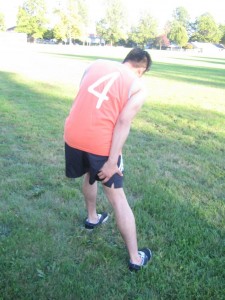Piriformis syndrome results to buttock pain that radiates down the leg. It is brought about by the impingement of the sciatic nerve by the taut piriformis muscle deep within the buttocks.
Possible causes
Overuse is usually the root cause of piriformis syndrome where the piriformis muscle spasm which results to pressure on the sciatic nerve.
Once the piriformis muscle tightens, it can crush the sciatic nerve and trigger discomfort that can spread down the leg which is generally referred to as sciatic pain.
In some cases, tight adductor muscles on the interior of the thigh is also a possible cause. The abductors on the exterior could not function properly and places more strain on the piriformis muscle.

What are the indications?
The signs of piriformis syndrome includes soreness or discomfort in the buttock muscle that can spread down the rear part of the leg into the hamstring muscles as well as the calf muscles in some cases.
Generally, the discomfort might be confused as a hamstring strain. Nevertheless, there is no tenderness in the hamstrings. In addition, there is diminished range of motion of the hip joint, especially during internal hip rotation.
Management of piriformis syndrome
The treatment for piriformis syndrome involves 2 stages. The initial phase aims on reducing the pain by allowing the muscles to relax with the application of cold or heat, massage, electrotherapy and stretching. Once the pain settles, strengthening of the muscle is started to prevent reinjury.
Cold therapy can help if the injury is acutely painful or inflamed. As for chronic or long-term conditions, they respond well to heat to relax the muscles.
Anti-inflammatory medications might be prescribed by the doctor to lessen the pain and inflammation. Sports massage or electrotherapy such as ultrasound might be suggested to help the muscles relax. Remember that the individual should take some time to rest, especially those that worsen the symptoms such as running and other weight bearing activities.
